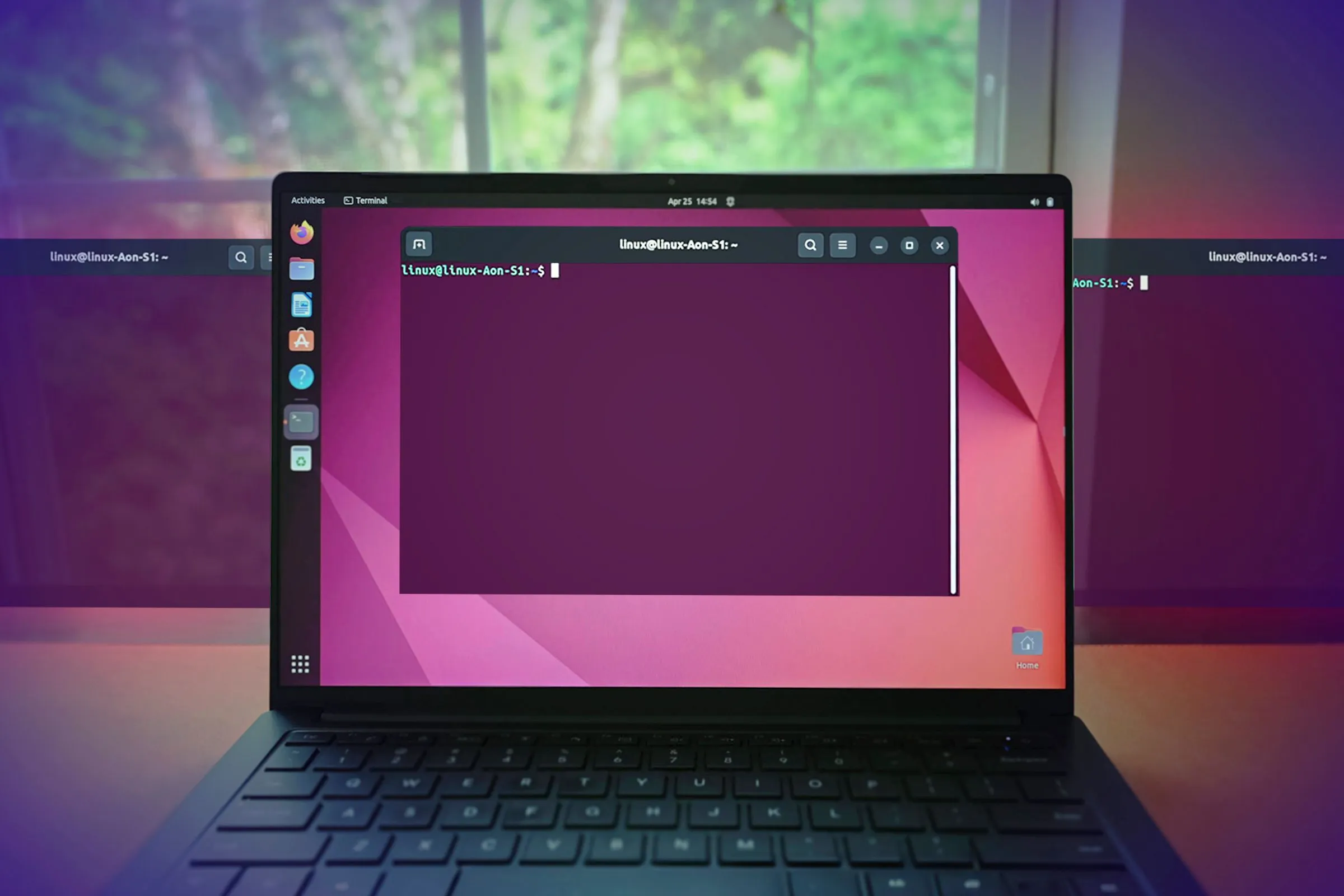Kinda disappointing.
The article is really trying to sell us, the reader, that using Linux without knowing how to use the command line is not only possible but totally feasible. Unfortunately, after each paragraph that expresses that sentiment we are treated to up to several paragraphs on how it’s totally easier, faster, and more powerful to do things via thé command line, and hey did you know that more people like coding on Linux than windows? Did you know you can do more powerful things with bash, awk, and sed than you ever could in a file manager?!
FFS
vimandnanoare brought up and vim’s “shortcuts” are praised… in an article on how you can totally use Linux through a gui and never need to open up the command line.Who is this written for? outside of people who not only already use Linux but are convinced that using any other OS is both a moral failing and a form of self-harm?
For clarity’s sake: I have been daily driving Linux, specifically ArchLinux, for the past 9 years, across a rotation of laptop and desktop computers. I do almost everything in the command line and prefer it that way.
I still think if you want people to try Linux you need to chill the fuck out on getting them to use the command line. At the very least, until they’re actually interested in using Linux on their own.
It is for the sake of combatting the commonly held belief that you can’t do anything without the terminal in Linux.
Progress on the accessiblility, and GUI centric applications and functionality in Linux has been huge in the last decade or two. It is now entirely possible to use a Linux system while rarely needing the terminal. And if you have someone techy helping set it up for you then it is possible to never have to.
deleted by creator
- Install Docker
- Install Portainer CE
Done.
https://docs.docker.com/engine/install/ubuntu/#installation-methods
https://docs.docker.com/engine/install/linux-postinstall/#manage-docker-as-a-non-root-user
How do I follow those instructions without the commandline?
My aunt is using Linux without terminal since 2016. Though she at least knows how to open terminal and paste commands when it’s necessary (needed a couple of times).
Same here. My Dad has been using Mint for years now, and wouldn’t know what to do in the command line. He gets on, does what he needs to do, and it just works for him.
deleted by creator
You can. Most things have gui options.
But you quickly learn for somethings. The terminal is just easier.
If you ignore odd stuff. Most everyday stuff to maintain the system is available in a controlled panal like program. It varies based on distribution and windows manager. But the basic setup is there for most things.
Its when you want to do something creative it gets more complex. While most commands have gui apps. Most online guidance will just find the terminal an easy way to guide you.
Of course.
But why would you want to!?
Dyslexia!
Dislexia* /j
Cixelsydm’i
Yeah, obviously, or the title wouldn’t even have happened.
And it’s been that way for a while now. Back when windows 10 happened, I was able to install mint, get most of my preferred programs set up, and handle data transfer with zero CLI use. Which was awesome, because my dyslexic ass would have taken forever otherwise. It wasn’t until I started putzing around for pop and giggles that I even opened a terminal.
My mom w as able to jump right in after installation of mint, and go through the gui to try things out, no issues.
The short answer is yes. But the interesting part - and I’m talking from personal experience - is that from the moment you realize just how easy and powerful using the console is, you learn how to use it.
And it does not mean you are going to turn into a full on expert or geek, tinkering around the console. You just learn a few simple commands that enable you to do something (or somethings) quicker, easier and cleaner than going through a GUI.
Can you? Yes. Should you? No.
Agreed. I’m not super computer geeky compared to this website. A bunch of people here would probably not even consider me techy.
That said, I hated the command line and would actively avoid it as often as possible. Once I started using it (just to paste code from tutorials) and then later to cd into folders so I can run an old game .exe with WINE, and then to straight up command line tools for converting .bin and .cue files into workable ISOs (also for old games), I started seeing with the command line is so sick.
I’m converted. It’s great. It’s not as spooky as it looks. Make the background 50% transparent.
Make the background 50% transparent.
I love this little line tacked at the end of your comment. I love that this is how the terminal is no longer scary-looking.
I’ve always thought GUIs felt more like doing things by hand and CLIs felt more like having the computer do it for you. Like if you want to do some complicated task that requires multiple programs and lots of menus using a GUI, it’s easy the first time, but once you need to do it a second time you have to do it all over again by hand. But if you do it from the command line, while it might be harder the first time, subsequent times are zero effort because you can just run the exact same commands again from your history or combine them into one or a script to make it even easier.
That it is. In GUI, you’re working for the computer to achieve your goals. At the CLI, you invest time teaching the computer what you want done, and it works for you.
For many people it’s not quicker or easier. If they’ve not used CLI before, they’d need to learn multiple new things. Going to a Web browser for help every time, before doing something is not quick. Memorising precise command strings that mean nothing to the user, is not easy for many either. For them it’s bad usability.
from the moment you realize just how easy and powerful using the console is, you learn how to use it
Yes, I understand that; there is a learning curve. For some, too steep.
And even if you did manage to do something 2 years ago, you can’t remember how to do it today. Do you really want up go down that same rabbit hole again? Spending 5 minutes reading stuff and running a single command takes a lot more time than 15 mouse clicks.
I feel like I only use ls, cd and apt update & apt upgrade. Other commands are for when e.g. hardware malfunctions.
If that is enough for your needs, that’s fine.
Based on my experience, I think you can. Many distros nowadays offer ways to do things without the use of the terminal. In Linux Mint, for example, you can rely solely on the Update Manager to update all installed applications and modules rather than using the terminal. You can also uninstall apps by right-clicking on them in the Menu and selecting the uninstall option. And finally, if you want to move files around, even to some locations that require root, you can do that using the File Explorer app (e.g. Nemo).
That being said, when I started on my Linux journey, I made it a point to actually learn some terminal commands, because I saw it as an important feature in Linux and a good skill to possess.
Yes, my mom does.
Mine, too!
deleted by creator
Yes you can but you often see the terminal used when helping people online. This is because it works across desktop environments and mostly across distros, however it does give the impression that the terminal is needed.
Yes. I’ve been using Ubuntu and now Kubuntu for about 12 years and I don’t use the CLI. I don’t play computer maintenance guy, so don’t need any weird hacks. I just use my applications, which all have GUIs. I don’t need the CLI despite people telling me I need to use it. They have never tried GUI only. So they don’t know what they are talking about. The next lot, who typically have no idea about usability, tell me I’m missing out on something. But it’s always something I’ve never needed. If I were to use the CLI, I would need to spend ages researching not just some command, but a whole lot of other concepts that I have no clue about, only to forget it all if I ever need that again. So not as fast as people claim. Luckily, Desktop Environment developers know this and put a lot of effort into making them user friendly. They understand usability. And that different users have different needs.
So I never planned on using the cli, but the thing is, when you’re following a tutorial — say you’re installing/configuring something new — it is so much easier to copy/paste commands than it is to read instructions and then translate them to your own particular GUI environment. Once you’ve done that a few times, you’re already one of us
It’s better to learn how to do it in your own environment, than having to learn a whole new strange environment. Especially one that is not user friendly, with poor visual feedback, intolerant of any mistype, and requiring memorising.
But the GUI also requires memorizing — often steps that are not consistent across desktop environments, or even versions of the same one! Terminal commands otoh can be noted down for later use — and the terminal remembers them. I use the GUI for some things too tbc — it depends on your use case obvs — but you don’t need to pretend the terminal is this genius-hacker level of inaccessible, because it’s really not
Memorising does not need to be precise with a GUI, as you are given visual cues and can see the next step to click. You don’t need to remember precisely every letter or it fails. You don’t even need to remember the name of an application. The desktop app launcher shows you which apps you have installed. I often pin apps to favourites as a reminder. Some Appimage apps don’t appear in the launcher. I forget I have them installed and they don’t get used.
Differences between Desktop Environments are easily found when you change. As GUIs are in many users comfort zone. We use them all the time. People know their home environment, and differences need only just that discovering. Not a whole new environment.
Yeah tbc once again I do actually use a GUI as well, I just think you’re doing yourself a disservice if you refuse to even try using the terminal, because it’s not as hard as you’re telling yourself it is. For example, typing ‘firefox’ and hitting enter is way easier than looking for the icon and clicking it. When I was first starting out with it, I mainly worked by cycling through previous commands with the up key. Then you learn about Ctrl+R and you are flying.
Again, if you don’t want to use the terminal that’s up to you, and a perfectly reasonable preference. But don’t make out that you couldn’t learn it very quickly if you wanted to, because you definitely could!
I launch favourite commands with 2 clicks. Once on the App launcher button, and once on the App itself. My hand is on the mouse anyway. So it’s fast. Way faster than typing a whole bunch of characters. For less used apps It’s 3 clicks as I’d open a category like “Media” or “Games”. And doing that, I get to see what I have in there. This builds up a picture in the users head for future use. Learning “Add to favourites” is time well spent. It can even be called “Pin to Start” or “Bookmark on Launcher” it doesn’t matter. You don’t need to memorise that exactly like the CLI. And right-clicking things is already second nature to huge numbers of users.
So I have no incentive to use text commands. It’s not faster. My hand is on the mouse for my apps anyway. And the CLI has terrible usability, via poor learnability, zero tolerance, and poor visual feedback. And completely useless for most things I do, like working with 3D models, images or drawings. I’m not a “text-worker” like IT tend to be. Plus, I want more non-IT people to use Linux, so discovering the easy ways to do things can help spread the word to them.
For me it would be like stepping off a high-speed train and walking over uneven ground instead.
Ok but if we’re talking about our own personal rigs, I launch favorite commands with one keystroke. I absolutely guarantee I can boot up my computer, navigate to whatever working directory and already have gotten to work before you’ve clicked on your second icon. But it’s different use cases isn’t it? I can definitely see how if you’re using the mouse anyway, a GUI suits you better. I work mainly with text, but so do most people, I think? It’s terms like “terrible usability” etc that I’m taking issue to here, because you’re talking out of your arse. You admit that you’ve never bothered to learn, then make sweeping proclamations as if everyone on earth uses their computer primarily for Blender
Ιt depends on your competence. My mom’s laptop is Debian with XFCE (2 GB RAM old Chromebook converted to run Debian) and of course, she doesn’t use the terminal. But then again, she doesn’t even know how to open a new tab on Chrome. She just uses 1 tab at the time (which is why it’s enough with 2 GB of RAM). So she’s never going to see a terminal in her life, and it’s going to work just fine for her, since the only thing she does on a computer is load 1 tab on Chrome, and mostly use Facebook, or youtube, or news/recipe sites that I have put on her bookmark bar. When the computer needs to be updated, I do it for her once a month or so (using the terminal).
But if you’re trying to do a lot more than that, then maybe, sometimes, you will need to fix or change things using the terminal.
The author argues that you don’t need to use the terminal but constantly argues that you should. The average computer user doesn’t even know which version of Windows they’re using. Many don’t even know if they’re using Windows or Mac. Until Linux gets over the obsession with the terminal we’re never going to have the year of Linux.
I disagree. Many people like to have control over there computer even if they don’t want to learn a bunch of new skills.
Linux isn’t for everyone but its gotten to the point where someone could figure it out if they so choose. It no longer is the unstable mess it was 10-20 years ago.
If you want a non-terminal os based on linux you just have to make something like android or chromeos or steamdeckos.
Those are and pretty popular, so I don’t know who can claim linux is “terminal obsessed” it’s just a kernel and there is a wide diversity of os based on it.Debian , fedora , suse etc might all be “obsessed” with the terminal.
For me that’s just the obvious economical way to offer features. decent GUI costs a lot more to develop and document - so you have to have less features for a given amount of dev time. Or you have google /valve/microsoft type amounts of resources to spend.I always thought this “year of linux” thing was a meme to make fun of canonical or idiotic tech journalists .
Is anyone realitsitcally interested in volunteering their time to win over legions of Microsoft fanboys. Fuck me sounds like hell.And frankly the use of terminal is going to be far from the first blocker to linux adoption for those who don’t even know they’re using windows or mac.
What’s wrong with using the cli? People act like it’s some arcane dark magic…
You’re typing things in a small box here rather than clicking on icons to reply. Sometimes text is just better.
You know not everyone likes to read a wall of text. Some people prefer watching a video than reading an article. So some people just like to use GUI than CLI, and that’s fine.
The problem with the cli is you need to memorize a whole bunch of new words and syntax in order to do anything. You also need to memorize what not to do so you don’t accidentally erase your system while using rm or cp or whatever.
Even something as simple as copying and pasting, which works the same in every single other program has new rules in the terminal. I mean, think about that. If you’re just learning bash, then the first thing you’ll be doing is copy pasting commands. But even that has the hurdle of 'oh, I guess this is the one program where ctrl-c means something else
Like, how do you look at sudo, cat, man, and apt, and think ‘yeah that’s intuitive’. And forget about multitasking, new users won’t even know how to quit most programs (is it ctrl-q? Just q? Esc? Ctrl-c? Ctrl-d? Wait how do I undo that, is it ctrl-z? Wait where did the thing go
For Vi: Esc :q or :q! or :wq or Shift+ZZ
I agree with the author then.
















